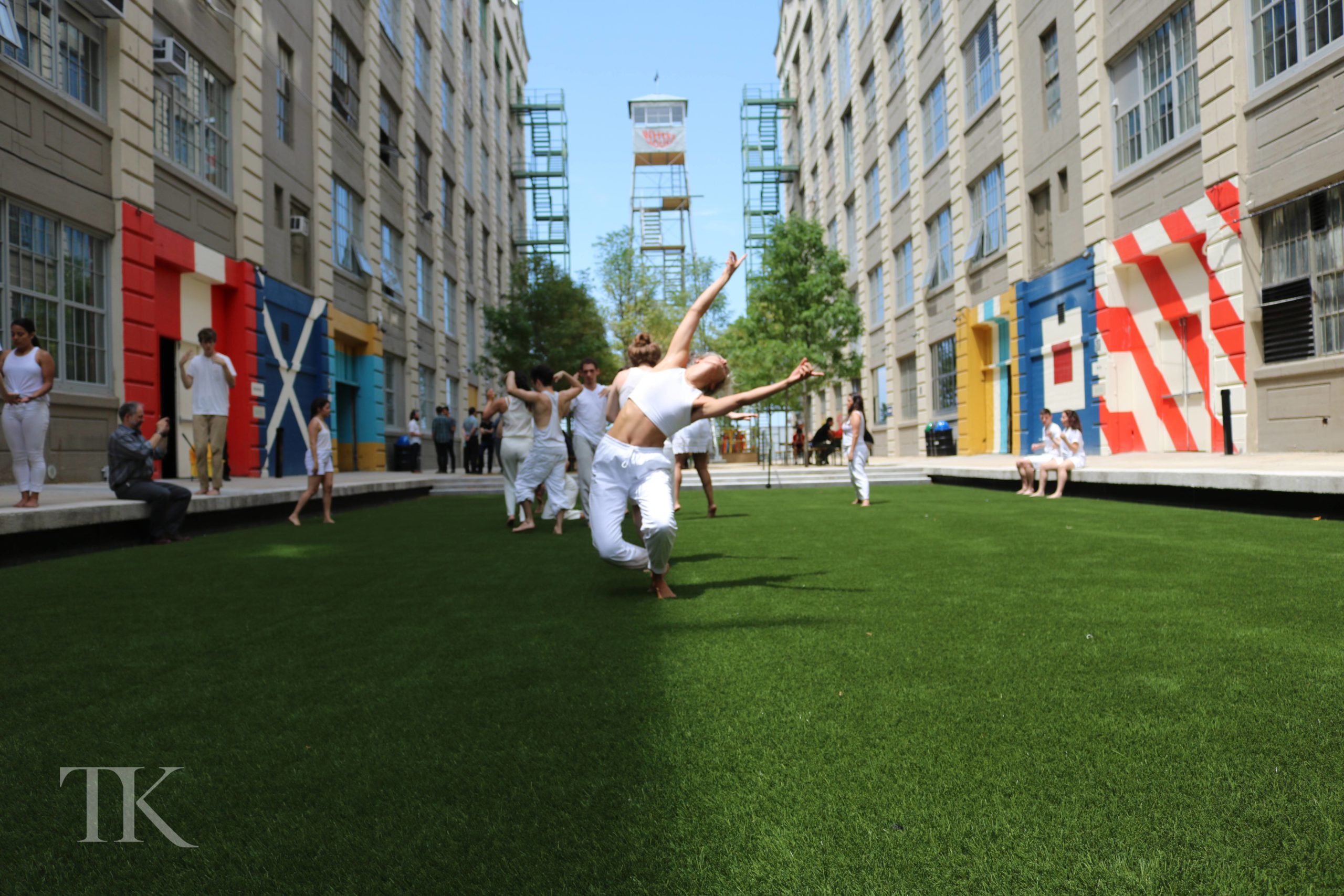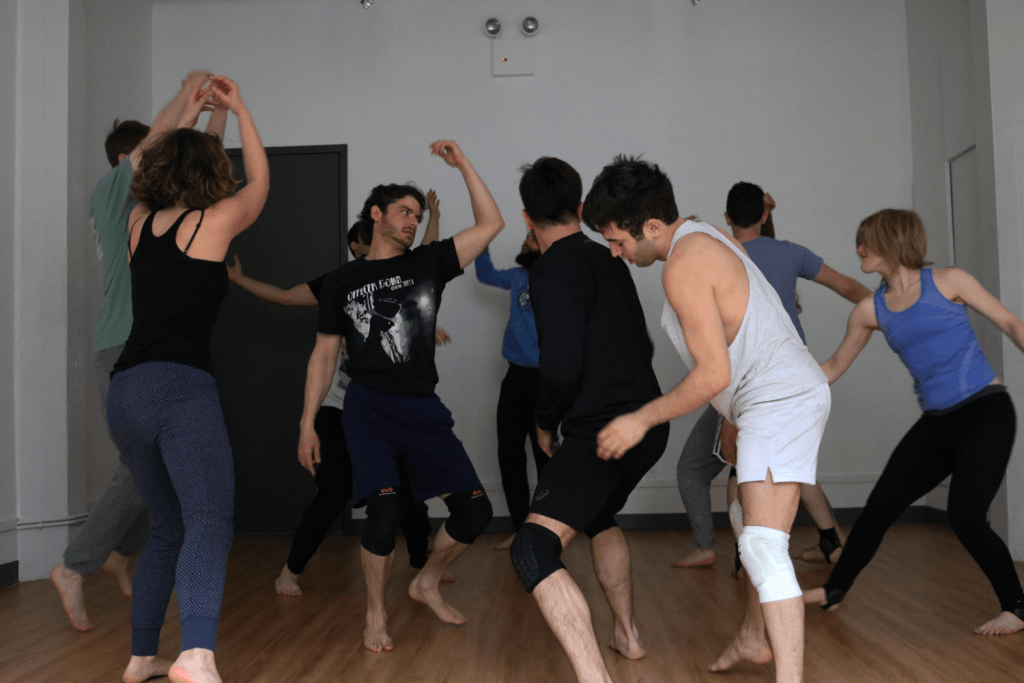
In the TK Faculty Spotlight: Master of Movement Julia Crockett (Part One)

Julia Crockett teaches Movement for the Two Year Conservatory Program at the Terry Knickerbocker Studio.
As an expert in Williamson Technique she also teaches at NYU Tisch and has her own company – Julia Crockett & Group. In this interview Julia shares her teaching philosophy, and why movement is crucial for actors to study.
What does movement mean to you?
On a broad scale, movement is the exploration of one’s own body and the function of one’s body. But movement for an actor I think is the exploration of the relationship between your physical self and your psycho-emotional self. We’re trying to liberate the actor’s instrument and help actors develop a physical instrument that can support and help them process their emotional lives and the particular demands that are placed upon them in training. So we’re trying to free up the body and get them to experience what it’s like to move without thought, to move with abandon, to move with freedom, and hopefully that freedom and play will carry over into the acting work.
What was your training like and why did you decide to teach movement?
I grew up dancing, so I’ve always been a mover. I trained in the Meisner technique with a woman named Maggie Flanigan. And at the same time, I was taking movement technique with Nate Flower and a woman named Danielle Liccardo who now teaches at Rutgers, Mason Gross School of the Arts. Nate now teaches here with me. I studied Meisner at the same time I was studying at NYU in Gallatin, studying Performance Theory, and Gender and Sexuality Studies. Then when I finished my training Nate approached me and said, “Hey I think that you should train to teach this work.” And for me, it was really a “no-brainer” because the movement work informed my acting in such a way, a profound way, and became, really, the lifeline of my acting training. It then grew into a much larger presence in my life, so I became a choreographer and a director based on my training with Nate. I started directing my own work. I started my own company. It’s really — along with acting— my primary creative practice. It’s sort of like my creative sanctuary. It’s what I do when I don’t want to worry about the industry.

What does a class with you look like?
There are four different levels of the work. It goes over four different semesters, and the first couple of levels are all about play, freedom, permission, expansive motion. There’s a lot of music, improvisation, some alignment work, and a lot of contact work. It’s one thing to open up the body and be expansive on your own, but it’s a very different thing to be in contact with somebody else. Each class in the first two levels usually has a period of improvisation. There’s lots of feedback, lots of talking about our experiences, and we end with some alignment work – lengthening and strengthening the body. The first level is all about play and permission. The second level is when we dive into the actor’s sensuality, which really has to do with their five senses. This is so they can be more involved moment to moment. The first two levels that we teach here are almost, by the book, the Williamson Technique. Then the third level we begin to be less concerned with release, although that’s always a part of what we do, and we start to explore more creatively. It’s about seeing the body as a creative tool or a creative instrument. We also incorporate other disciplines. Level three and level four incorporate a ton of different work that Nate and I have done over the years. Then we start thinking about composition and how we can tell or create meaning on stage with bodies that’s not necessarily as linear or text based as people might do in the acting room. Level four is a performance class, and we create our own content. It culminates with an ensemble devised piece at the end. In that level, students really get to practice what it’s like to collaborate, to make something out of nothing. And in that way, the last two levels become about physical creativity.
What is your ultimate goal for students?
To feel free and comfortable in their bodies, to feel like they have the permission to express themselves and to operate at their fullest capacity. Also to understand their bodies and to be able to listen to and have a dialogue with their bodies.
What is the difference between teaching actors and dancers, and why is movement essential to actors?
The difference between teaching actors instead of dancers is the emotional component and the experiential component. Not so long ago, I had a student say, “Ahh!”, she actually said this, “I feel so resentful about this class. She’d just finished her first year of training, and she just took a level one class. She said, “I thought I was just going to be working out and doing yoga, and now I’m asked to be in intimate contact with people.” I think actors are so willing and ready to jump into the experiential side of it so that they’re listening to what their body has to say, not only as a creative medium but as a channel. A channel that helps them process. So it’s that much more emotive. Much more personal. And the contact that actors make with each other is much deeper and more personal. In my company, I work with actors and dancers together, and it’s interesting how they kind of learn from each other